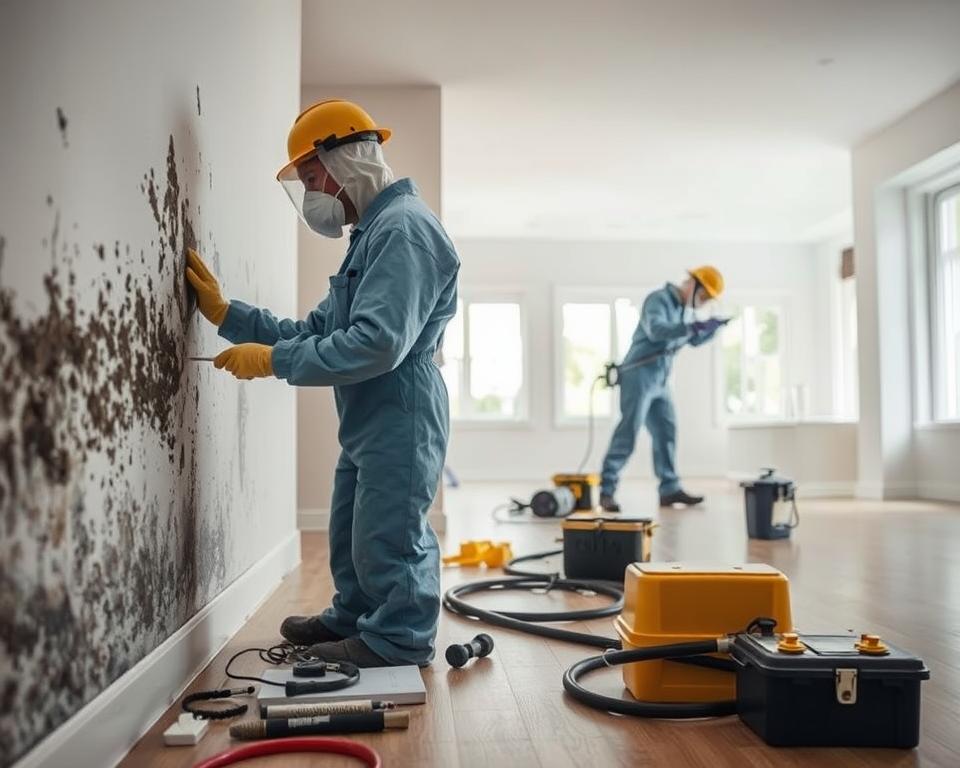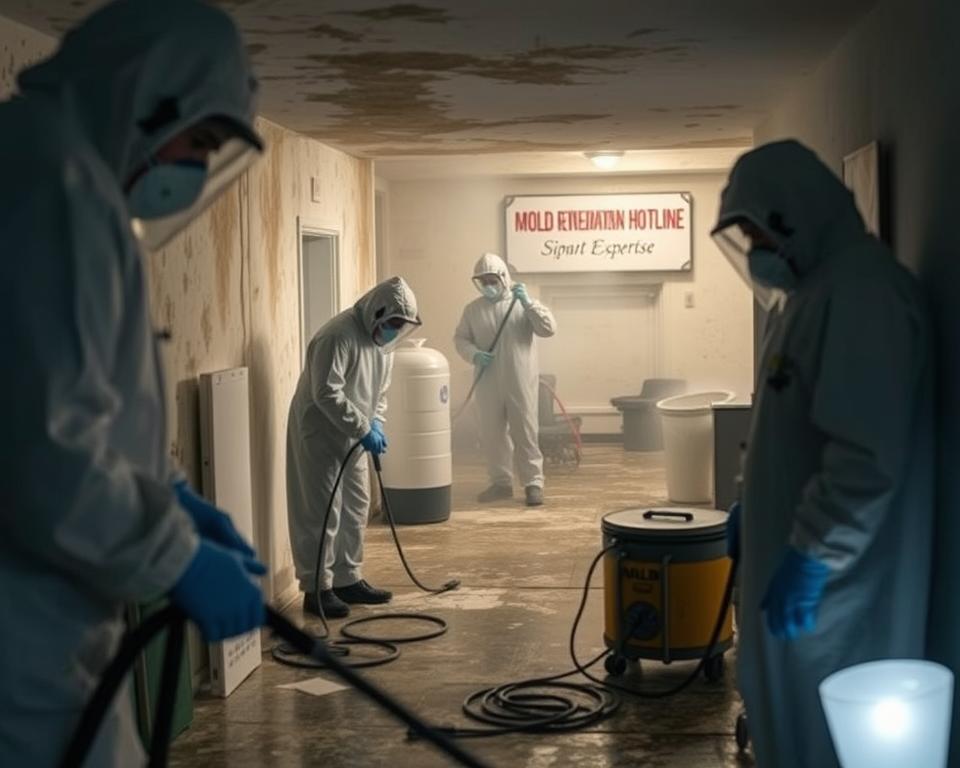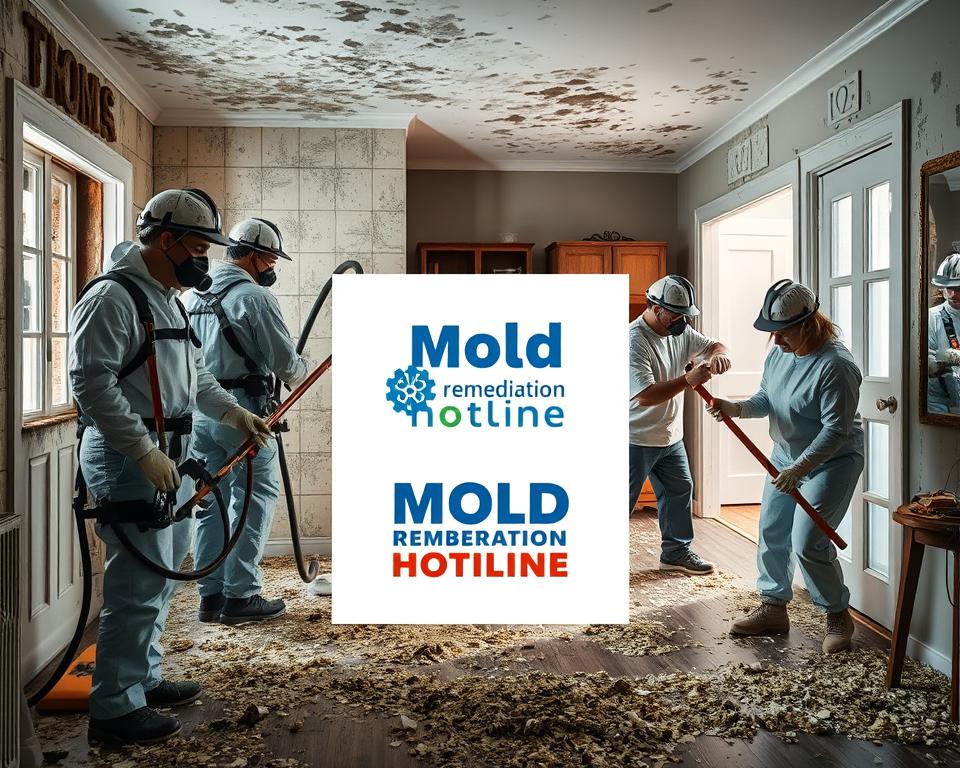Did you know over 5 million fungi species exist worldwide? These organisms thrive in damp spaces, and their microscopic spores float through every building. While some are harmless, others trigger severe reactions like sinus infections or persistent rashes – particularly in allergy-prone individuals.
Many property owners assume wiping visible growth solves the issue. However, spores linger in air ducts, insulation, and hidden crevices. Surface cleaning alone often leads to rapid regrowth, creating a cycle of frustration. This is where specialized strategies become critical for lasting results.
Professionals use two primary approaches: one targets immediate cleanup, while the other prevents future outbreaks. The first method might seem cheaper initially but rarely addresses moisture sources or airborne particles. Comprehensive solutions involve advanced equipment like HEPA filtration and antimicrobial treatments to restore safe indoor air quality.
Key Takeaways
- Surface-focused methods eliminate visible growth but often miss hidden spores
- Advanced techniques prevent regrowth by addressing humidity and ventilation issues
- Airborne particles can trigger respiratory problems if not properly contained
- Industry standards require specific protocols for containment and disposal
- Proper documentation helps with insurance claims and property value retention
Introduction to Mold Issues and Effective Solutions
Mold silently invades countless properties each year, feeding on damp surfaces and compromising indoor environments. While often hidden, its effects ripple through buildings – warping materials and triggering health concerns. Addressing these issues requires understanding their root causes and proven resolution methods.
Understanding the Fundamentals of Mold Growth
Fungal colonies form when moisture meets organic materials like wood or drywall. Even minor water leaks create breeding grounds, allowing microscopic spores to multiply rapidly. Common trouble spots include:
- Wall cavities near plumbing fixtures
- Basements with poor ventilation
- Attics affected by roof leaks
Spores travel through air currents, settling in new areas with suitable humidity levels. Paper products and fabric furnishings often become secondary contamination sites.
Why Professional Intervention is Critical
DIY cleaning methods frequently spread spores to unaffected zones. “Attempting surface-level fixes without containment measures risks cross-contamination,” notes an industry expert. Health symptoms like persistent coughing or skin irritation often worsen when improper handling releases more particles into living spaces.
Specialists use advanced tools to detect hidden moisture sources and measure spore concentrations. Their protocols address both visible growth and airborne threats, creating lasting solutions rather than temporary fixes.
Certified Mold Remediation vs. Removal Services: A Comprehensive Comparison
Effective fungal management requires understanding two distinct strategies: elimination and prevention. While both approaches target unwanted growth, their methods and outcomes differ dramatically.

Key Differences and Implications for Property Health
Surface-focused companies often use basic scrubbing techniques. These methods eliminate visible signs but leave behind microscopic spores in wall cavities or HVAC systems. Without addressing humidity sources, regrowth typically occurs within weeks.
| Approach | Focus Area | Tools Used | Success Rate |
|---|---|---|---|
| Quick Removal | Visible growth | Bleach, scrub brushes | 35% recurrence |
| Full Remediation | Root causes | HEPA vacuums, moisture meters | 92% success |
Comprehensive processes involve three critical steps: identifying water intrusion points, containing affected areas, and applying antimicrobial barriers. This systematic method protects building materials and occupants simultaneously.
Long-Term Benefits of a Remediation Approach
Investing in thorough solutions reduces future repair costs by 60-80%. Proper moisture control prevents structural decay and preserves indoor air quality. Homes treated with advanced protocols maintain higher resale values due to documented treatment histories.
Licensed professionals follow EPA guidelines for containment and disposal. Their reports satisfy insurance requirements and provide legal protection against future liability claims. Lasting results depend on combining scientific methods with preventative maintenance plans.
Comparing Processes: From Inspection to Specialized Disposal
Professional fungal management begins long before scrubbing surfaces. Systematic approaches separate effective solutions from temporary fixes, ensuring homes remain safe and structurally sound.
Thorough Resolution Process: Steps and Techniques
Specialists start by mapping moisture sources using infrared cameras and humidity sensors. Affected areas get sealed with plastic sheeting while HEPA air scrubbers create negative pressure zones. This containment stops spores from invading new spaces during treatment.

Porous materials like drywall or insulation get removed entirely. Non-porous surfaces undergo mechanical scrubbing followed by EPA-approved antimicrobial sprays. “Containment protocols aren’t optional – they’re what prevent cross-contamination,” explains a restoration technician. Final air quality testing by independent labs confirms spore levels meet safety thresholds.
Surface-Level Limitations and Hidden Risks
Basic cleaning often pushes spores deeper into walls or HVAC systems. Without addressing humidity problems, regrowth occurs in 3-6 weeks. Studies show 78% of DIY attempts fail to eliminate airborne particles that trigger respiratory issues.
Improper disposal practices also risk spreading contamination. Licensed teams partner with waste facilities equipped to handle hazardous materials safely. Lasting protection requires both eliminating current growth and modifying environments to discourage future outbreaks.
Conclusion
Protecting your living space from biological threats requires strategic decisions. Quick fixes might eliminate visible growth, but lasting solutions demand deeper action. Comprehensive approaches tackle hidden moisture sources and airborne particles that fuel recurring problems.
Professionals implementing full remediation protocols use HEPA filtration and antimicrobial treatments. These methods restore safe indoor environments by addressing root causes rather than symptoms. Third-party air testing confirms success, while regulated disposal prevents future contamination risks.
Choosing qualified teams ensures compliance with environmental standards and insurance requirements. Look for companies offering preventive plans and post-treatment guarantees. Their documentation helps maintain property value and reduces long-term repair costs.
Investing in thorough solutions safeguards both physical structures and occupant well-being. Homes treated with advanced strategies avoid the cycle of temporary fixes and repeated expenses. For persistent fungal issues, prioritize experts who combine scientific methods with practical prevention strategies.
